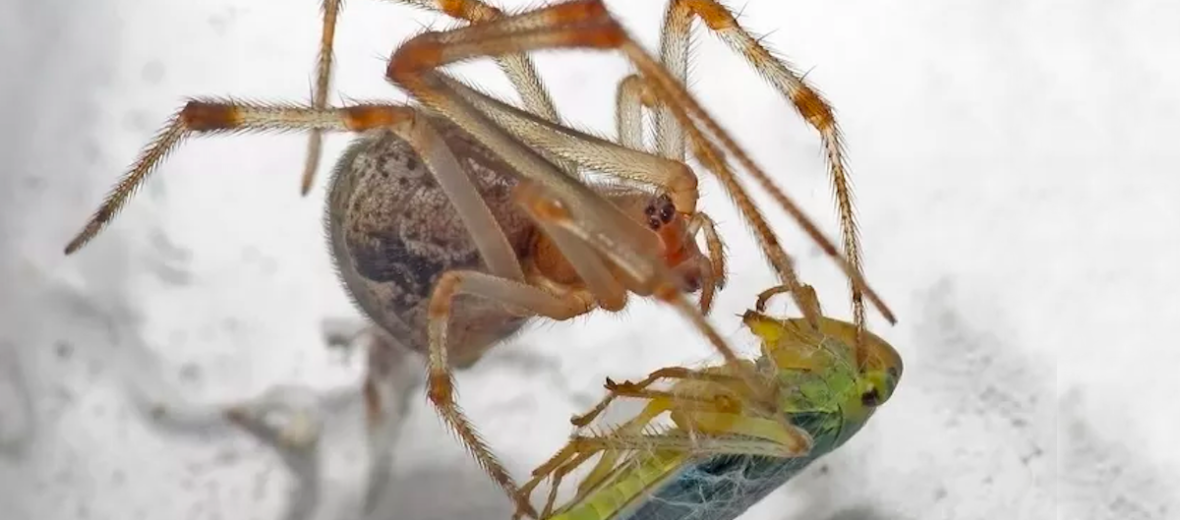
The common house spider, aka American house spider, can be found just about anywhere in North America. They can dwell in attics, backyards, barns, basements, gardens, sheds, and most other types of man-made structures. These arachnids are synanthropic (benefit from humans and their environmental modifications). Due to their abundance, these spiders are not evaluated by the IUCN. This article is dedicated to my friend Geoff.
First the Stats…
Scientific name: Parasteatoda tepidariorum
Length: Up to .24 inch, plus up to .40+ legspan
Lifespan: Up to 2 years
Now on to the Facts!
1.) The common house spider preys on a wide variety of smaller invertebrates. These other invertebrates are often times considered to be pests in homes. So, house spiders are definitely beneficial.
2.) These cobweb spiders spin multiple webs that ensnare prey. The vibrations of the struggling prey attract the house spider, who captures and envenomates it’s prey with a neurotoxin that also acts as a digestive enzyme.
3.) They aren’t aggressive towards humans or pets. But, if handled improperly, they may attempt to bite. But their fangs are so small, their bite isn’t likely to even be felt as anything more than a pin prick.
4.) Some of their favored prey items are ants, flies, mosquitoes, and smaller wasps; to name a few.
5.) Once their food dries out, these spiders usually drop the expired and now useless prey to the floor in an effort to free up space in their web, rather than destroying and rebuilding the web or moving to a new location.
But wait, there’s more on the common house spider!
6.) Common house spiders are typically preyed on by jumping spiders and pirate spiders. Assassin bugs also prey on them.
7.) Males and females will sometimes share the same web for extended periods of time. This is a rarity with spiders.
Did you know…?
Like nearly all arachnids, they have poor eyesight. They have trouble seeing anything further than 4 inches from them.
8.) Females will sometimes build nests near 1 another. However, they will fight if they get too close.
9.) If cornered, they will often feign death, rather than holding their ground and biting.
10.) The female will lay up to 250 eggs in a sac. Females will also produce up to 17 clutches of eggs in their lifetime.
Now a Short Common House Spider Video!
Be sure to share & comment below! Also, check out the Critter Science YouTube channel. Videos added regularly!
Want to suggest a critter for me to write about? Let me know here.
Photo credit: Luis Miguel Bugallo Sánchez



